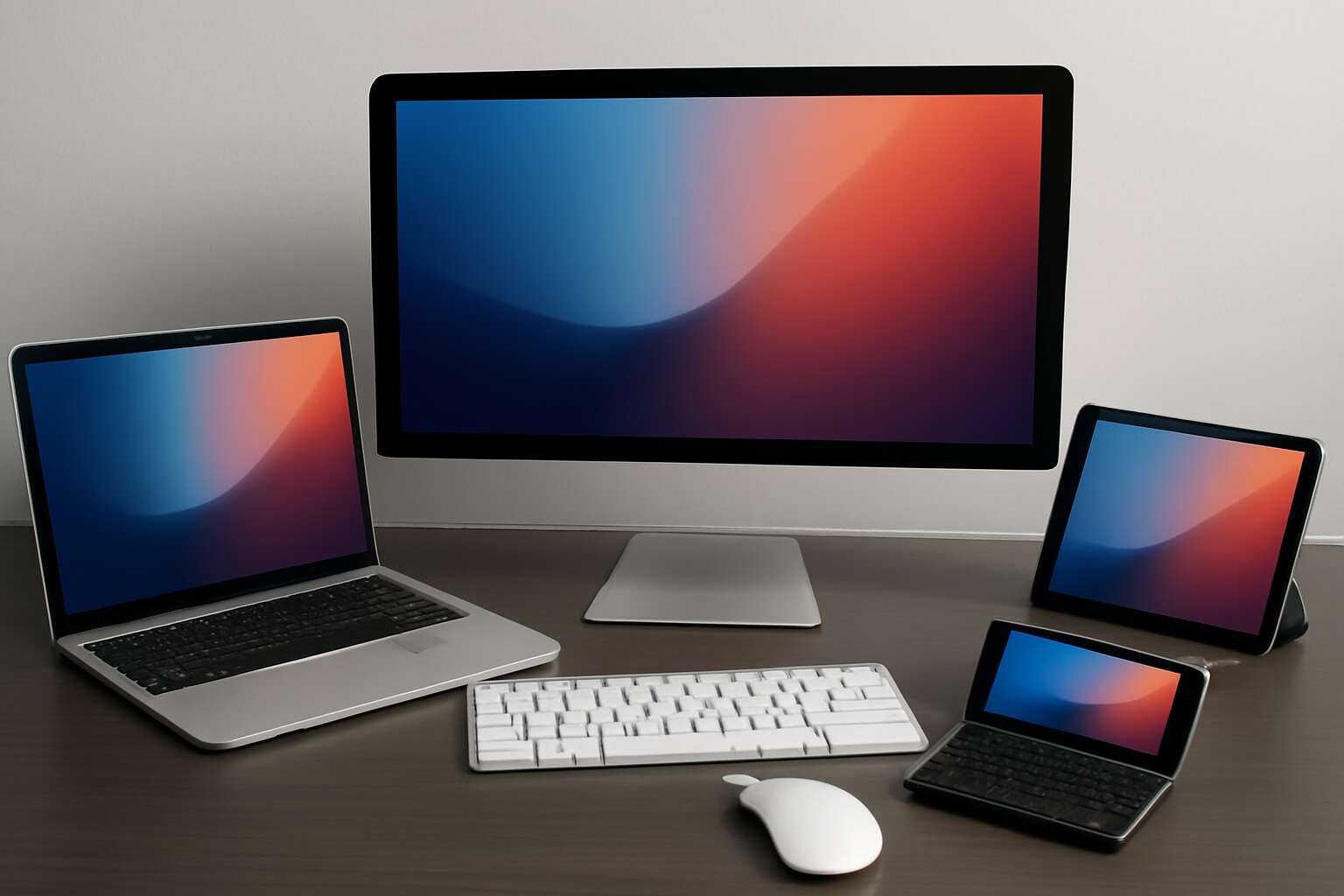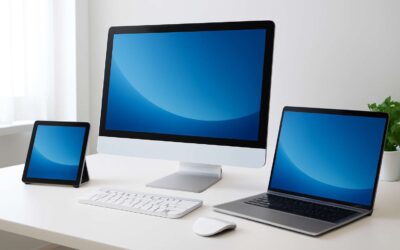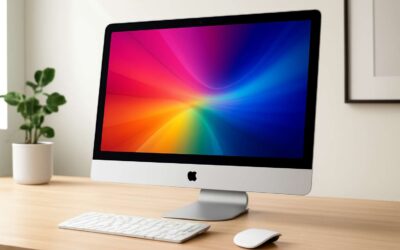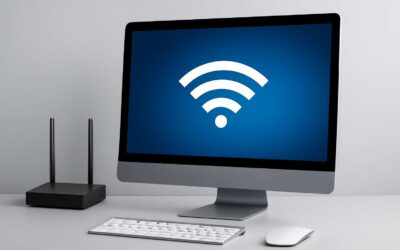Understanding Computer Device Categories
Overview of Computer Devices – Defining compactness, portability, and functionality in computer devices
In the vast universe of digital gadgets, understanding the various categories of computer devices is akin to mastering the alphabet of modern technology. Desktop computers, laptops, palmtops, and tablets are categories of devices that each serve a specific purpose in our increasingly mobile lives. While desktop computers boast raw power and expansive screens, their portability leaves much to be desired. Laptops, on the other hand, strike a delicate balance between size and performance, making them the ultimate portable workhorse.
Palmtops and tablets elevate the game further, offering unprecedented compactness and ease of use. These devices are defined primarily by their portability and functionality. Palmtops, often small enough to fit in a pocket, prioritise mobility over extensive processing, while tablets offer a larger screen with touch capabilities that make them perfect for both work and play. The key to understanding these categories of computer devices lies in recognising the trade-offs between compactness, portability, and functionality — a dance as old as the first floppy disk!
Importance of Categorization – Why categorizing desktop computers, laptops, palmtops, and tablets matters
In the shadowed corridors of technological evolution, understanding the distinct categories of computer devices is essential to navigating the labyrinth of modern innovation. Desktop computers, laptops, palmtops, and tablets are categories of devices that each whisper their own dark secrets, tailored for specific needs and environments. To truly grasp their significance, one must recognise how these categories carve out their own realms—each with its unique blend of power, portability, and purpose.
Misclassification is a peril even the most seasoned tech explorers can fall prey to. When we comprehend the differences—such as the raw brute force of desktop computers versus the ethereal lightness of tablets—we unlock a deeper appreciation for their roles in our lives. For those seeking the perfect balance between mobility and capability, understanding these categories becomes as crucial as deciphering an ancient cryptic manuscript. After all, the choice between a desktop computer and a palmtop could be the difference between confinement and liberation—each category a key to a different digital existence.
Desktop Computers: Power and Performance
Features of Desktop Computers – High performance, customizable configurations, and typical use cases
When it comes to power and performance, desktop computers stand unrivalled among the categories of devices. These technological beasts are built for those who demand high performance and customisable configurations, all wrapped up in a package that can handle the most intensive tasks with ease. Whether it’s rendering 3D models, crunching complex data, or running multiple virtual machines, desktop computers are the stalwart workhorses of the digital realm.
Unlike their more portable cousins, desktop computers offer a level of flexibility that’s hard to beat. You can upgrade components, add extra storage, or install cutting-edge graphics cards — all tailored to your specific needs. This makes them perfect for demanding use cases such as video editing studios, gaming aficionados, or scientific research labs. In the realm of categories of devices, desktop computers maintain their dominance in performance, offering a customised powerhouse that’s as adaptable as it is reliable.
Advantages of Desktop PCs – Upgradeability, better hardware options, larger screens
In the intricate dance of digital innovation, desktop computers stand as veritable bastions of power and potential. Their inherent upgradeability transforms them into dynamic canvases, where components can be meticulously tailored to meet the most demanding tasks. Unlike laptops, palmtops, and tablets are categories of devices that primarily prioritise portability over raw performance, desktop computers excel in offering superior hardware options and expansive screens that elevate productivity to an art form.
For those who crave customisation, the allure of desktop PCs is undeniable. From installing cutting-edge graphics cards to expanding storage capacity, the possibilities are almost limitless. This flexibility ensures that desktop computers remain the preferred choice for professionals engaged in intensive tasks—be it complex 3D modelling, scientific computations, or immersive gaming experiences.
- Enhanced hardware options provide a tangible advantage, with options such as high-refresh-rate monitors, advanced cooling systems, and robust power supplies.
- The larger screens facilitate a depth of visual clarity unmatched by their portable counterparts, making detailed editing and design work more intuitive.
- Upgrading components becomes a seamless process, allowing users to extend the lifespan of their investment and adapt to evolving technological landscapes.
In essence, desktop computers are not just devices; they are customisable powerhouses capable of transforming digital ambitions into tangible realities. As categories of devices, they embody a fusion of reliability, adaptability, and sheer performance—traits that continue to make them indispensable in high-stakes environments.
Ideal Users – Gamers, professionals, and businesses requiring robust performance
In a world where digital prowess often defines professional and recreational success, desktop computers stand as unassailable titans of raw power and precision. Their capability to handle high-stakes tasks with unwavering stability makes them the backbone of many industries. For gamers seeking immersive, lag-free experiences, desktop computers deliver exceptional frame rates and customisable setups that elevate gameplay to an art form. Similarly, professionals engaged in graphic design, video editing, or scientific computation rely on these machines’ capacity for demanding applications.
Moreover, desktop computers laptops palmtops and tablets are categories of devices that each serve distinct niches—yet none can quite match the specialised performance of a desktop when it comes to intensive workloads. The flexibility of desktop configurations allows users to assemble bespoke systems with advanced cooling, high-refresh-rate monitors, and expansive storage solutions. This synergy of hardware and performance creates an environment where digital ambitions are not just met but surpassed, transforming potential into tangible achievement.
Laptops: Balance of Portability and Power
Characteristics of Laptops – Compact designs, integrated components, battery-powered operation
In a world increasingly driven by mobility, the allure of laptops lies precisely in their ability to strike a delicate balance between portability and power. These devices are marvels of design, featuring compact forms that hide powerful components beneath sleek exteriors. Unlike traditional desktop computers, laptops integrate everything—keyboard, screen, battery—into a unified package that can be carried effortlessly. This integration allows users to transition seamlessly from a coffee shop to a conference room, without sacrificing performance.
What truly sets laptops apart is their capacity to deliver substantial processing power in a lightweight chassis, making them ideal for both creative professionals and busy executives. Their battery-powered operation liberates users from the constraints of fixed power sources, fostering a new level of productivity and flexibility. For those seeking a versatile device that adapts to a dynamic environment, laptops are an indispensable choice in the broad spectrum of categories of desktop computers, laptops, palmtops, and tablets.
Benefits of Laptops – Mobility, versatility, suitable for remote work and travel
In a world that moves at an ever-accelerating pace, the capacity to adapt swiftly becomes a defining trait. Laptops exemplify this principle, embodying a perfect synthesis of portability and power. They are more than just devices; they are gateways to a realm where mobility does not compromise capability. The true marvel lies in their ability to deliver robust performance in a lightweight chassis, enabling users to remain productive—whether in a bustling café or a quiet airport lounge.
For those who seek versatility beyond the confines of traditional workspaces, laptops offer an unparalleled advantage. Their design allows seamless transition from one environment to another, fostering a sense of independence and spontaneity. Here’s a quick glance at what makes them indispensable:
- Mobility that supports remote work and travel
- Versatile functionality suitable for both creative and professional tasks
- Long-lasting battery life that liberates from fixed power sources
In essence, laptops are not merely tools; they are embodiments of human resilience and adaptability—crucial in an era where our surroundings constantly shift. They stand as a testament to the human desire to stay connected, to remain in motion, and to excel regardless of location. When considering categories of desktop computers, laptops, palmtops, and tablets, it becomes clear that each serves a distinct purpose, yet laptops uniquely capture the spirit of modern mobility—an essential trait in today’s relentless pursuit of progress.
Popular Use Cases – Students, remote workers, mobile professionals
In an age where multitasking is as vital as breathing, laptops stand out as paragons of balance—combining portability with impressive power. For students juggling lectures and late-night study sessions, remote workers navigating virtual meetings, or mobile professionals closing deals in cafes or airports, the appeal of a device that adapts seamlessly cannot be overstated. Laptops are the quintessential tool for those who refuse to be tethered to a desk, offering a harmonious blend of compact design and high performance.
When considering popular use cases, it’s clear that laptops are remarkably versatile. They serve as digital classrooms, home offices, and on-the-go command centres all rolled into one elegant package. Their ability to deliver robust functionality—whether editing complex documents, managing multimedia, or running resource-intensive applications—makes them indispensable.
- Portability that supports continuous productivity, wherever you are.
- Long-lasting batteries that ensure no moment is lost to a dead power source.
- Flexibility to switch between work, entertainment, and creative pursuits effortlessly.
Such attributes explain why laptops have become the preferred choice for many modern users. With desktop computers, palmtops, and tablets each playing their unique roles, it is the laptop that truly captures the spirit of modern mobility—an essential trait in today’s relentless pursuit of progress and innovation.
Palmtops and Pocket PCs: The Compact Computing Devices
Defining Palmtops – Small, portable devices designed for on-the-go use
In a world where technology evolves at a relentless pace, the significance of palmtops and pocket PCs cannot be overstated. These compact computing devices have redefined portability, offering power and functionality within a diminutive form factor. Despite their size, palmtops — sometimes called pocket PCs — serve as essential tools for professionals who refuse to be tethered to a desk. They epitomise the fusion of convenience and capability, enabling users to access emails, manage schedules, or even run specialised applications on the move.
The allure of these devices lies in their ability to fit comfortably in the palm of your hand, yet pack enough processing power to handle everyday tasks. As part of the broader categories of desktop computers, laptops, palmtops, and tablets are categories of computing devices tailored to meet diverse needs. Their core strength is mobility, making them ideal for those who value agility over bulk. Whether used by field researchers, busy executives, or digital nomads, palmtops exemplify the relentless pursuit of compactness without sacrificing essential functionality.
Features of Palmtops – Limited hardware capabilities, touchscreen interfaces
Palmtops, or pocket PCs, represent a fascinating blend of simplicity and ingenuity. Their defining feature is a compact hardware design that prioritises portability over raw power, often resulting in limited hardware capabilities compared to larger counterparts. Yet, what they lack in processing muscle, they compensate for with intuitive touchscreen interfaces that make navigation effortless. These touchscreens serve as the primary means of interaction, transforming a tiny device into a versatile tool for on-the-go productivity.
Despite their diminutive size, palmtops can perform a surprising array of tasks. Users can check emails, manage calendars, or run specialised applications—demonstrating that even limited hardware, when paired with thoughtful design, can deliver meaningful functionality. For those seeking an ultra-portable computing solution, palmtops exemplify the delicate balance between size and utility, proving that sometimes less truly is more.
In the broader landscape of computing devices, desktop computers, laptops, palmtops, and tablets are categories of devices tailored to meet diverse needs. Their shared goal remains to provide accessible, efficient technology that adapts seamlessly to human desires for mobility and convenience. The unique strengths of each category highlight the importance of understanding their features, especially when considering how palmtops fit into this ecosystem of innovation.
Applications – Personal organization, quick information access, lightweight tasks
In the realm of modern technology, palmtops and pocket PCs stand as miniature marvels—devices that seem to conjure a universe of possibilities within their tiny frames. These compact computing devices have carved out a niche for those who seek quick access to information and effortless personal organisation on the move. Their small footprint belies their potential, transforming simple tasks into seamless experiences. With features tailored for portability, palmtops excel in managing calendars, checking emails, and running specialised applications, proving that efficiency can be found in the most diminutive of designs.
To truly appreciate their application, consider their role as trusty sidekicks in the daily hustle—lightweight companions that keep you connected and organised. Whether navigating busy schedules or accessing vital data in a flash, palmtops and tablets are categories of devices that deliver swift, reliable performance without the bulk of traditional computers. Their intuitive touchscreen interfaces make interaction feel natural, almost like conjuring magic with each tap and swipe. In a world that values speed and convenience, these devices embody the perfect blend of simplicity and utility.
Tablets: The Versatile Touchscreen Devices
Characteristics of Tablets – Thin, lightweight, touchscreen-based interface
Tablets are the chameleons of the digital realm, blending portability with powerful functionality in a sleek, touch-centric package. These versatile devices are characterised by their ultra-thin profile, lightweight construction, and intuitive touchscreen interface that transforms the way we interact with technology. Unlike traditional desktop computers, laptops, or palmtops, tablets offer a seamless blend of mobility and performance, making them indispensable for modern life.
With their vibrant displays and responsive touchscreens, tablets are perfect for a wide array of activities—from browsing the web and streaming content to creative pursuits like drawing or note-taking. Their portability means they can be effortlessly carried from room to room or even taken on adventures, igniting your productivity wherever inspiration strikes. The remarkable adaptability of tablets ensures they remain a cornerstone among categories of computer devices that cater to diverse user needs, whether for casual use or professional tasks.
Strengths of Tablets – Ease of use, multimedia capabilities, variety of apps
In a world driven by rapid technological evolution, tablets emerge as the quintessential embodiment of versatility within the categories of desktop computers, laptops, palmtops, and tablets are categories of. Their sleek, touch-centric interface fosters an intuitive user experience that bridges the gap between sophisticated performance and effortless usability. These devices are not merely tools but extensions of personal expression, seamlessly integrating into everyday life with an aura of modern elegance.
The strengths of tablets lie in their ease of use and multimedia capabilities. Thanks to their vibrant displays and responsive touchscreens, they transform simple gestures into powerful commands—whether you’re browsing the web, streaming immersive content, or indulging in creative pursuits like sketching or note-taking. Their intuitive interfaces make technology accessible, even for those less inclined towards technical complexity. Moreover, the extensive variety of apps available enhances their functionality, catering to everything from casual entertainment to professional productivity.
For those seeking a device that combines portability with performance, tablets stand out as the ideal choice. Their lightweight design ensures they can be effortlessly carried during commutes, travel, or spontaneous brainstorming sessions. This portability, paired with their multimedia prowess, makes tablets an indispensable asset in the modern digital ecosystem—truly a testament to how categories of devices evolve to meet the multifaceted demands of contemporary users.
Ideal Users and Use Cases – Media consumption, casual browsing, educational purposes
In an era where technology seamlessly intertwines with daily life, tablets emerge as the quintessential embodiment of versatility, captivating users with their intuitive charm. These sleek, touch-centric devices are more than mere gadgets; they are portals to a universe of multimedia and effortless communication. Their luminous screens and responsive interfaces transform simple gestures into powerful commands, making media consumption and casual browsing a delight. Whether streaming high-definition content or sketching on a digital canvas, tablets elevate modern interaction to an art form.
Perfect for educational purposes, tablets serve as portable classrooms, offering instant access to e-books, interactive lessons, and quick reference tools. Their lightweight nature ensures they accompany students and professionals alike on their journeys, transforming any space into a hub of creativity or productivity. From a quick scroll through social media to immersive video calls, their adaptability makes tablets an indispensable device within the categories of desktop computers, laptops, palmtops, and tablets are categories of.
- Media consumption that transports users into worlds of immersive storytelling.
- Casual browsing that turns waiting time into productive moments.
- Educational pursuits that foster curiosity and knowledge acquisition on the go.
In essence, tablets redefine what it means to stay connected and informed, seamlessly blending portability with power. Their versatility makes them the ideal choice for those who seek to harness the digital realm with elegance and ease—an exquisite testament to the evolution of modern computing devices.
Comparison of Device Categories
Portability – From desktops to tablets
In the ever-evolving landscape of digital devices, understanding the comparison of device categories portably is crucial. While desktop computers offer unmatched power and customisation, their lack of portability is a notable drawback. Conversely, tablets and palmtops are designed to be lightweight and easy to carry, transforming on-the-go productivity. The diversity within these device categories of desktop computers, laptops, palmtops, and tablets are categories of ensures that there is a perfect fit for every user, whether seeking high performance or ultimate convenience.
For instance, laptops bridge the gap between power and portability, offering a versatile solution for remote work and frequent travellers. Palmtops and tablets, with their compact size, excel in quick information access and multimedia consumption.
- Tablets are ideal for media enthusiasts and casual users
- Palmtops serve those needing lightweight personal organisation
The choice ultimately hinges on specific needs—be it maximum hardware capabilities or effortless mobility—highlighting the nuanced spectrum within these device categories of desktop computers, laptops, palmtops, and tablets are categories of. This dynamic range makes the digital world more accessible and adaptable to individual lifestyles and professional demands.
Performance Levels – High-end desktops vs. lightweight tablets
When it comes to performance levels, the gap between high-end desktops and lightweight tablets is astonishing. Desktop computers offer unparalleled power, often equipped with advanced processors, substantial RAM, and dedicated graphics cards, making them ideal for demanding tasks like video editing, 3D rendering, and high-end gaming. In contrast, tablets prioritise portability and ease of use, sacrificing raw power for quick responsiveness and multimedia capabilities. This stark difference underscores the importance of understanding that desktop computers, laptops, palmtops, and tablets are categories of devices designed to serve diverse needs.
For users seeking top-tier performance, high-end desktop computers remain unmatched. Their upgradeability ensures longevity and adaptability, with hardware configurations tailored to specific professional or recreational pursuits. Conversely, lightweight tablets excel in delivering instant access to information, media, and light productivity tasks. Their intuitive touch interfaces and portability make them perfect companions for casual browsing or media consumption on the move.
- High-performance desktop computers for intensive computing tasks
- Lightweight tablets for quick, on-the-go digital interactions
In essence, the choice hinges on whether the priority is maximum hardware capabilities or effortless mobility. Recognising these distinctions within the categories of desktop computers, laptops, palmtops, and tablets is vital for making informed decisions in today’s dynamic digital landscape.
Use Case Suitability – Gaming, professional work, casual browsing
In today’s digital ecosystem, choosing the right device often hinges on understanding the distinct use case suitability of desktop computers, laptops, palmtops, and tablets are categories of. While a gaming enthusiast might lean towards a high-performance desktop computer, a student seeking portability may find a lightweight laptop or a compact palmtop perfectly suited. Each device category offers unique advantages tailored to specific needs—whether it’s intense graphics processing or swift media browsing.
For professional work involving complex software, desktop computers deliver unparalleled power and customisation options. Conversely, casual browsing or media consumption is effortlessly handled by tablets, thanks to their intuitive interfaces and multimedia strengths.
- Gaming
- Professional tasks
- Casual browsing
are areas where the device category choice becomes particularly impactful. Recognising these differences ensures users make informed decisions, aligning their device selection with their daily digital demands and lifestyle preferences.
Choosing the Right Device
Factors to Consider – Performance needs, portability, budget, specific tasks
Choosing the right device isn’t just about picking the flashiest model or the most affordable option. It’s about understanding your specific needs and matching them with the perfect category of device. When considering desktop computers, laptops, palmtops, and tablets are categories of devices that each serve different purposes, and recognising their unique strengths can make all the difference.
Performance needs are paramount — high-end desktop computers deliver unmatched power for demanding tasks, while lightweight tablets excel at casual browsing and media consumption. Portability also plays a crucial role; if mobility is essential, then laptops or palmtops might be the ideal choice. Budget constraints shouldn’t be overlooked either, as the cost of each device varies significantly depending on features and performance levels.
For instance, a professional requiring robust performance may lean towards a desktop computer, whereas a student or remote worker might find a tablet or laptop more suitable. Ultimately, aligning your device choice with your specific tasks ensures an optimal balance between efficiency and convenience.
Expert Recommendations – Matching device categories to user requirements
In a landscape where technology evolves at a relentless pace, understanding which device category best aligns with your needs can feel like navigating a labyrinth. Yet, the choice hinges on nuanced considerations—where performance, portability, and purpose collide in a delicate dance. Desktop computers, laptops, palmtops, and tablets are categories of devices that each possess distinct character traits, serving different segments of users with precision.
Expert recommendations suggest that matching these categories to user requirements isn’t merely about specifications but about anticipating how each device will integrate into daily life or work. For instance, a professional engaged in high-end graphic design or intensive data analysis might find desktop computers to be the sanctuary of power and customisability. Conversely, a student or on-the-move executive benefits immensely from the lightweight versatility of laptops or palmtops, where mobility is paramount.
Recognising these core differences ensures that the device chosen doesn’t just meet expectations but elevates productivity, seamlessly blending performance with practicality. After all, selecting the right device category is less about brand prestige and more about understanding the intricate symbiosis between purpose and capability.




0 Comments